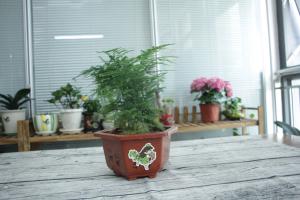Can You Plant Trees on an Access Easement?
An access easement serves as a legally binding agreement between a property owner and a third party that grants the third party the right to access the property owner's land to access utilities or for other purposes. The third-party could be a neighbor, utility company, government agency, etc. Access easements can be created through a property deed, court order, or negotiation between the property owner and the third party. This article aims to answer the question of whether you can plant trees on an access easement.
What Is the Purpose of an Access Easement?
In general, an access easement is created to ensure that a necessary part of a property remains accessible to the many people who may need to use it. This may include utility companies who need to access power lines, or public works who need to access underground pipes or other infrastructure. An access easement is often necessary to ensure that a property owner can utilize their property as they see fit while ensuring that the land remains accessible to others who need it.
Can You Plant Trees on an Access Easement?
The answer to this question might vary depending on the specific terms of your access easement agreement. Before planting trees or engaging in any activities on an access easement, you should consult with a lawyer or a real estate professional, who can advise you on your individual situation.
That said, in many cases, access easements are limited to use solely as a right of way. As a result, planting trees on an easement may be prohibited or subject to specific restrictions. If you have any doubts, be sure to review the terms of your access easement agreement and ask any questions, so you clearly understand what you can or can't do on the easement.
Why Plant Trees on an Access Easement?
Planting trees on an access easement may be prohibited or restricted, but some property owners may choose to take this action for various reasons. For example, planting trees might be done to enhance the privacy of their property or to create a more pleasant view. In some cases, the trees may be planted for other reasons, such as to restore a natural landscape, provide shade or to serve as windbreaks.
While planting trees on an access easement may seem like a good idea, it's essential to understand the potential risks that doing so may pose. If you plant large trees or trees with deep roots, you may risk damaging underground utilities or infrastructure on the easement, leading to costly damage or even legal issues with the third party accessing the property.
Conclusion
Can you plant trees on an access easement? The answer is, it depends. Some access easements may prohibit or limit planting trees, while others may allow or encourage it. However, before planting trees, you should weigh the potential benefits against the risks, as well as review the terms of your access easement agreement and speak with an attorney or real estate professional to ensure that you are not violating any agreements or laws.

 how many times do yo...
how many times do yo... how many planted tre...
how many planted tre... how many pine trees ...
how many pine trees ... how many pecan trees...
how many pecan trees... how many plants comp...
how many plants comp... how many plants can ...
how many plants can ... how many plants and ...
how many plants and ... how many pepper plan...
how many pepper plan...

































